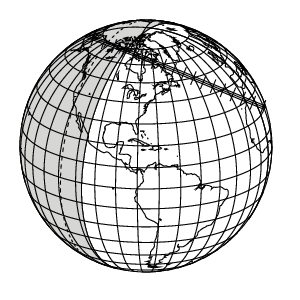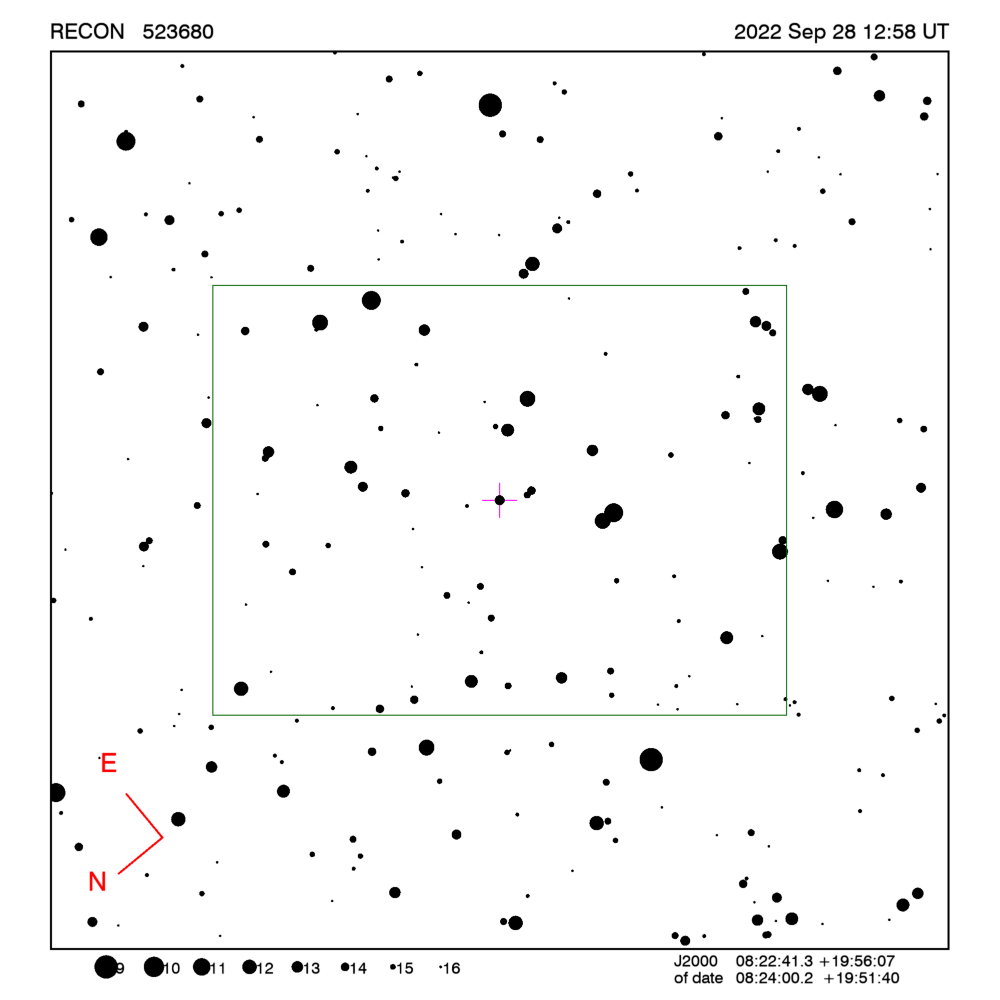RECON: TNO occultation with 523680
Event between (523680) 13YJ151 and star GA1080:03072944
with event index number of 2624694
Geocentric closest approach at 2022/09/28 12:57:38 UTC
J2000 position of star is 08:22:41.3 +19:56:07
Equinox of date position of star is 08:23:58.3 +19:51:46
Stellar brightness G=13.8,
use SENSEUP=64 with the MallinCam and and exposure
time of 1 seconds with the QHY174 camera.
Star is 95 degrees from the moon.
Moon is 8% illuminated.
TNO apparent brightness V=22.2
 TNO is 43.6 AU from the Sun
and 44.0 AU from the Earth.
TNO is 43.6 AU from the Sun
and 44.0 AU from the Earth.
The TNO is moving 18.1
km/sec on the sky relative to the star, or,
2.0 arcsec/hr.
The 1-sigma error in the time of the event is 101 seconds.
The 1-sigma cross-track error in the shadow position is
1848 km.
The TNO has an absolute magnitude Hv=5.6
Diameter=448.8 km assuming a 5% albedo -- 24.8 sec chord
Diameter=183.2 km assuming a 30% albedo -- 10.1 sec chord
Dynamical classification is SCATNEAR
Star training set for 523680, (2022/09/28 12:58UT)
Object RA Dec mag sep mel
Pollux 07:46:42.3 +27:58:10 1.1 11.76 104
20 Cnc 08:24:39.8 +18:15:27 5.9 1.61 94
PPM 125182 08:23:22.8 +19:53:07 8.4 0.15 95
PPM 098647 08:24:22.5 +19:56:38 9.2 0.12 94
523680 08:24:00.2 +19:51:40 13.8 94
Positions are for equinox of date

Azimuth is measured in degrees eastward from north.
North is at an azimuth of 0, due East is at an azimuth
of 90 degrees, due South is 180, and due West is 270.
Do not use the listing below for the RECON CPC 1100 telescopes.
This is provided for other non-team facilities.
Star training set for 523680, (2022/09/28 12:58UT)
Object RA Dec mag sep mel
Pollux 07:45:17.9 +28:01:33 1.1 11.76 104
20 Cnc 08:23:21.7 +18:19:55 5.9 1.61 94
PPM 125182 08:22:03.9 +19:57:33 8.4 0.15 95
PPM 098647 08:23:03.7 +20:01:06 9.2 0.12 94
523680 08:22:41.3 +19:56:07 13.8 94
Positions are for J2000
Event circumstances last updated at 2022/03/12 01:47:12 UT
Marc W. Buie,
Southwest Research Institute
RECON
 TNO is 43.6 AU from the Sun
and 44.0 AU from the Earth.
TNO is 43.6 AU from the Sun
and 44.0 AU from the Earth.
